Prior to the anticipated use of a HPA Motorsport aftermarket high pressure fuel pump I decided to take my GTI to the dyno.

The GTI has been getting tuned with the Shuenk IS38+ turbocharger and prior to leaving the stock fueling configuration, (93 octane fuel), I wanted to see where things are at.
Initially I had used the Eurodyne IS38 OTS file with the turbo because the Shuenk IS38+ is dimensionally equivalent to an IHI IS38, just with more robust internals. Seeing as how it has more robust internals I wanted to get more from the turbo and chose to have Equilibrium Tuning provide a custom tune. The tuning is partially complete, with things on hold while I work to address the HPFP shortcoming, shown on the fuel pressure chart below.
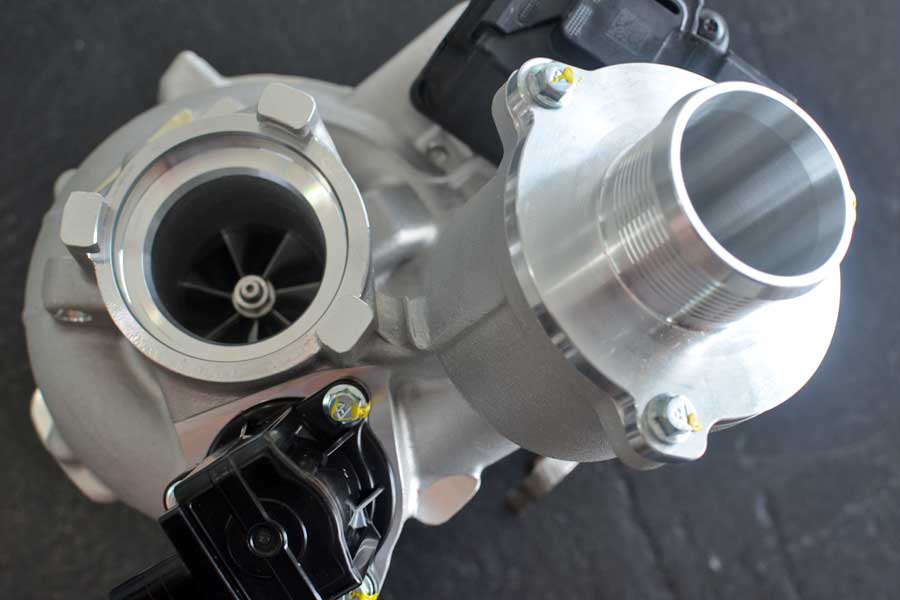
Getting a session on a DynoJet dyno was more of a challenge than I had anticipated as a couple candidate shops in my area were having mechanical problems, but eventually things worked out.
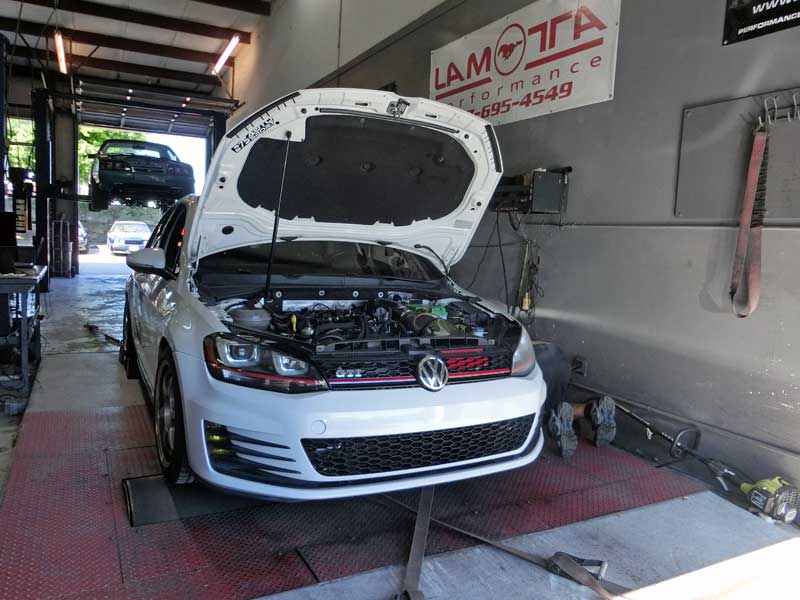
Despite prepping the car to hook up to the dyno we had some challenges getting a good signal for the RPM. The result was that the first two pulls had intermittent RPM causing the torque values to also be intermittent. The chart below shows the Horsepower measured on all three pulls versus MPH. Results today between pulls were very consistent.
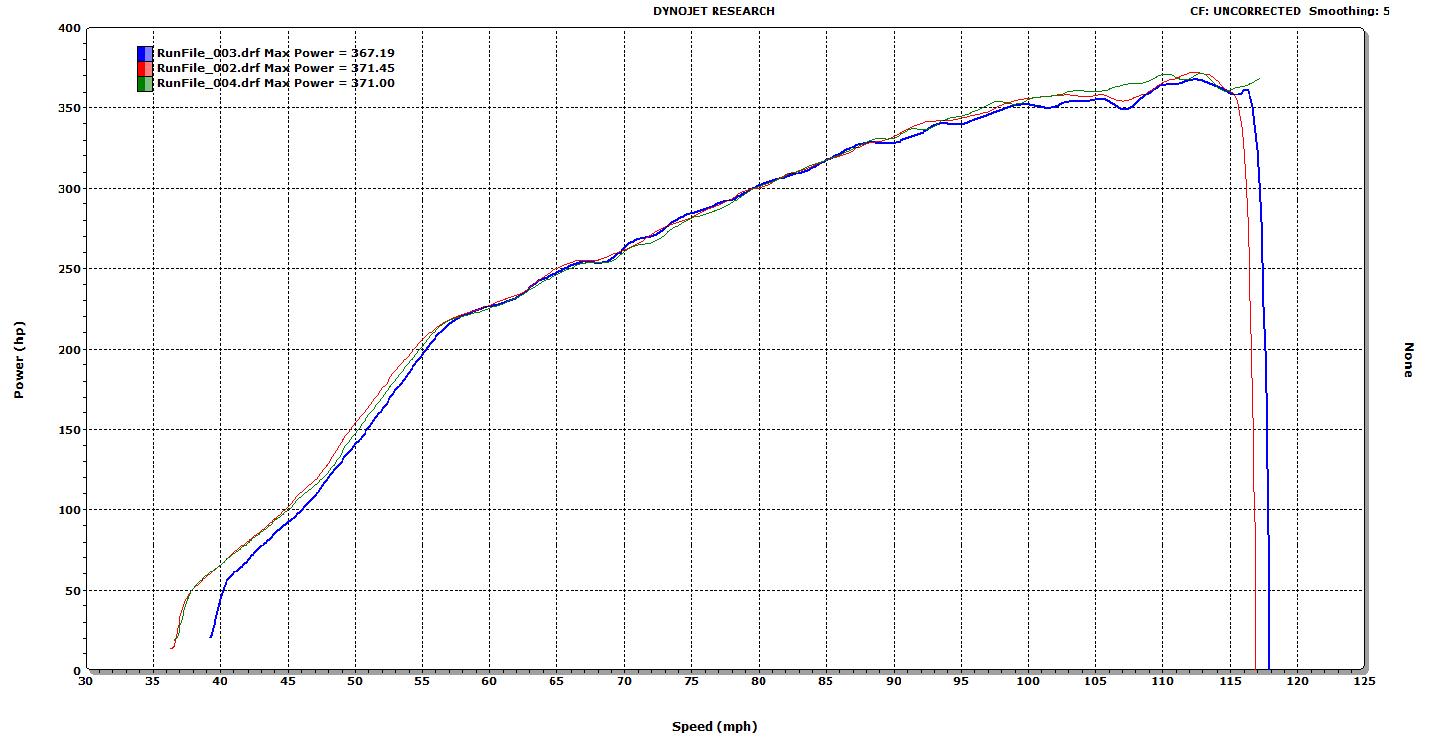
Fortunately by the third pull we were able to get a good signal for RPM and I was able to get a “typical” looking dyno chart.

Having one pull that had RPM and MPH data available made it easy to plot the two against each other and determine an equation for the relationship on the dyno. This allowed me to use the MPH data from the first two pulls to calculate the Torque values and create a complete chart of Horsepower and Torque for the three pulls. This chart is shown below:
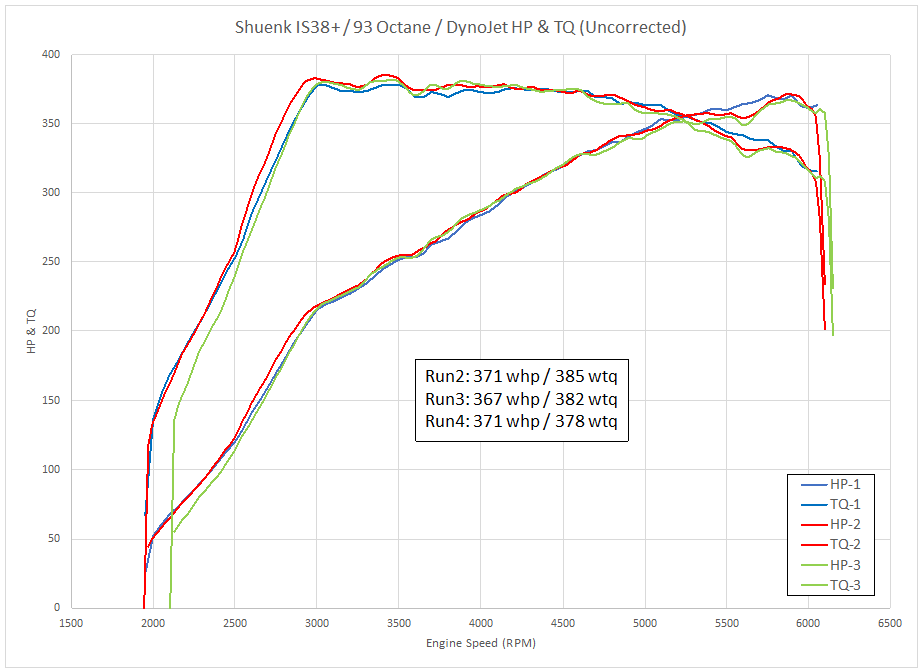
Today’s uncorrected numbers from the DynoJet on the 26 psi tune are:
- 371 whp / 385 wtq
- 367 whp / 382 wtq
- 371 whp / 378 wtq
Note: I prefer using a DynoJet dyno because I have found good consistency of data. I have also found that the readings are slightly higher than actual.
In addition to the DynoJet measured data there were measurements being made with a Cobb Accessport and other stand alone temperature and pressure sensors.

Data recorded with the Accessport also showed consistency across the three pulls so only a single pull is shown on the charts below.


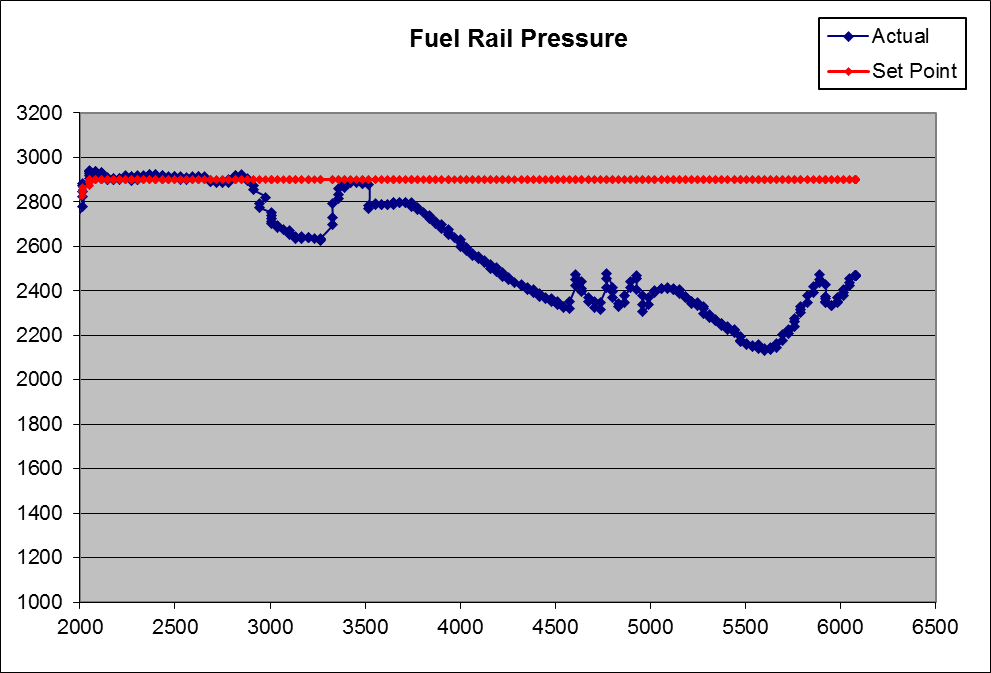
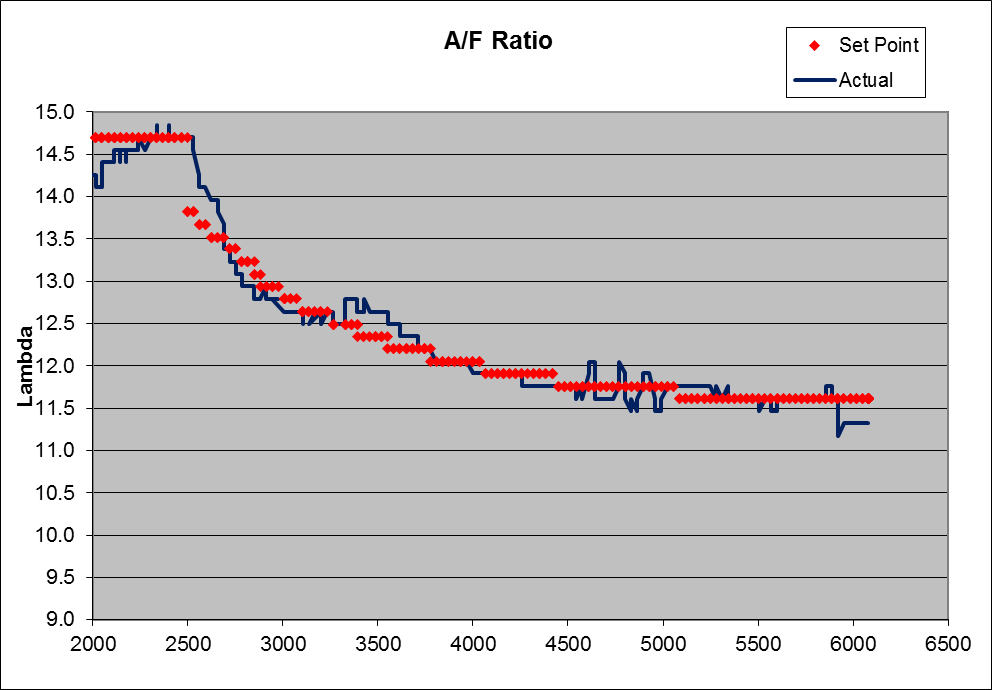


The chart below combines temperature readings at the turbocharger outlet and the intake manifold along with pressure readings at the turbocharger outlet and intake manifold.
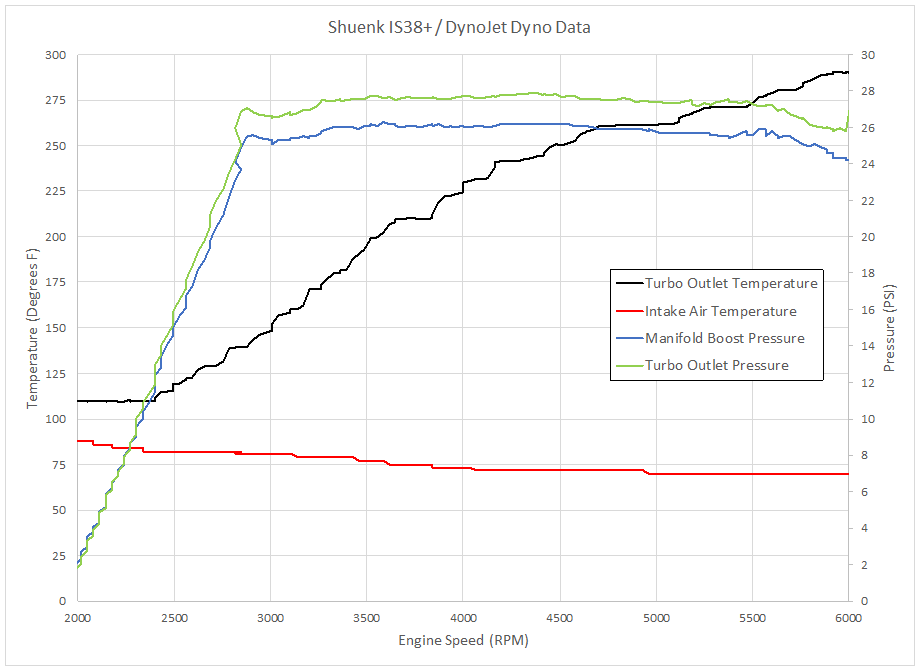
The difference in pressure between the turbocharger outlet and intake manifold is likely mostly attributable to slight differences in the measuring devices along with the pressure drop across the intercoolers.
For this dyno session the GTI is equipped with the Unitronic stock location IC in conjunction with the eBay FMIC in a bicooler configuration.
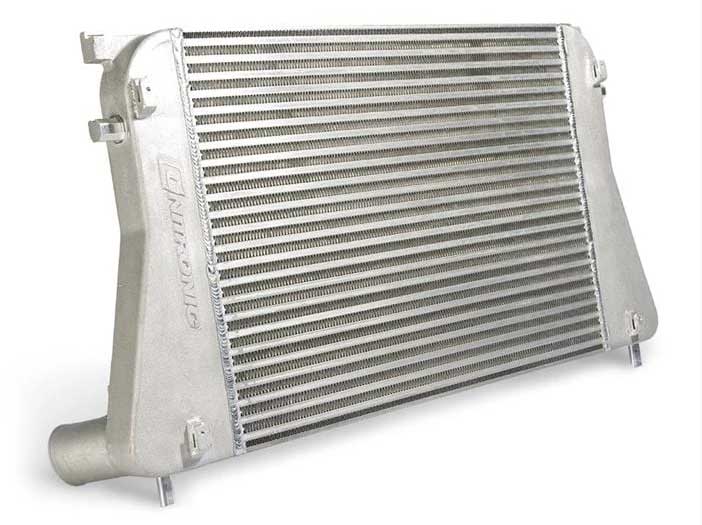
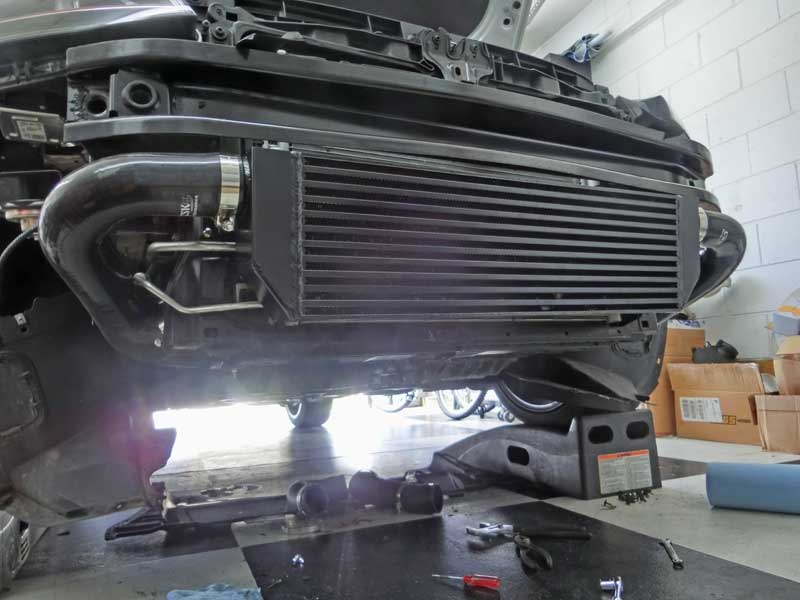
The combination proved to be very effective with the intercooler outlet temperature flat-lining during each of the three pulls. (There were breaks between pulls.)
The chart below shows how during the pull the IAT drops toward the temperature that is measured at the intercooler outlet.

Overall, despite the challenge of trying to get a good RPM signal the Shuenk IS38+ turbocharger along with the rest of the setup produced good, consistent, results.

Nice numbers! I had similar numbers with my IS38 APR tune. I have an APR intercooler, IE open intake, APR TIP, APR downpipe and APR exhaust. Here’s my dyno run, I don’t have all the other numbers you are addressing. https://www.youtube.com/watch?v=fgNOs0verog
I forgot to fill out my name on the previous comment I’ve followed you for a while. Chuck
I’ve got a chart I made that’s an average of 12 other people’s dyno charts using a tuned IS38. The results with my car were right inline with the average for an IHI IS38.
Did my car fall into that average with my setup?
Based upon the peak numbers you reported it is performing like the others I have data for.
Thanks Jeff!
Hey i like the idea of having the bicooler. As currently with just a direct fit intercooler i often get 30+ degrees over ambient. Do you notice the cooler charge on a regular basis? And with your tuner did he mention if pressure drop was apparent or an issue?
I’ve noticed that it’s more resistant to warming when under prolonged boost, but not really cooler. Given that most aftermarket ICs get the temps down to single digits there’s really not much improvement to be had in terms of cooling. No issues with pressure drop.